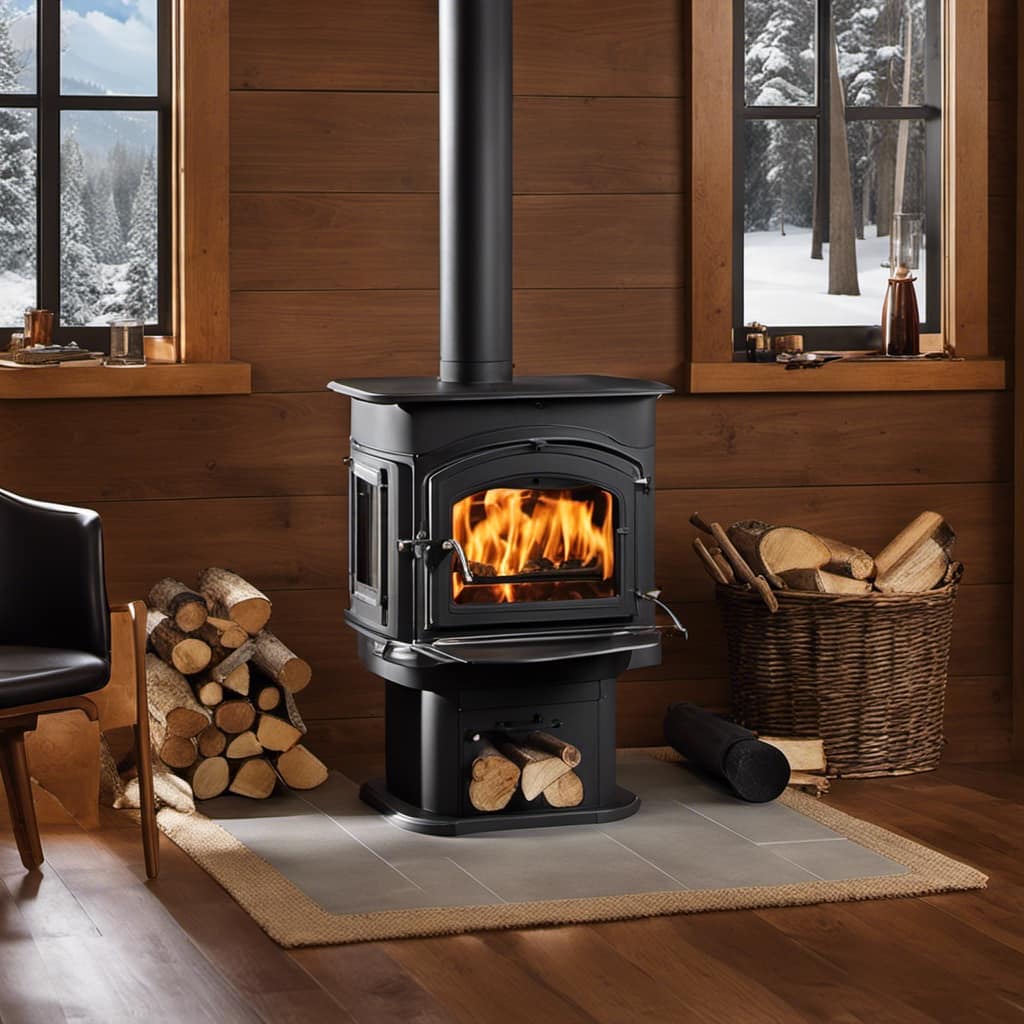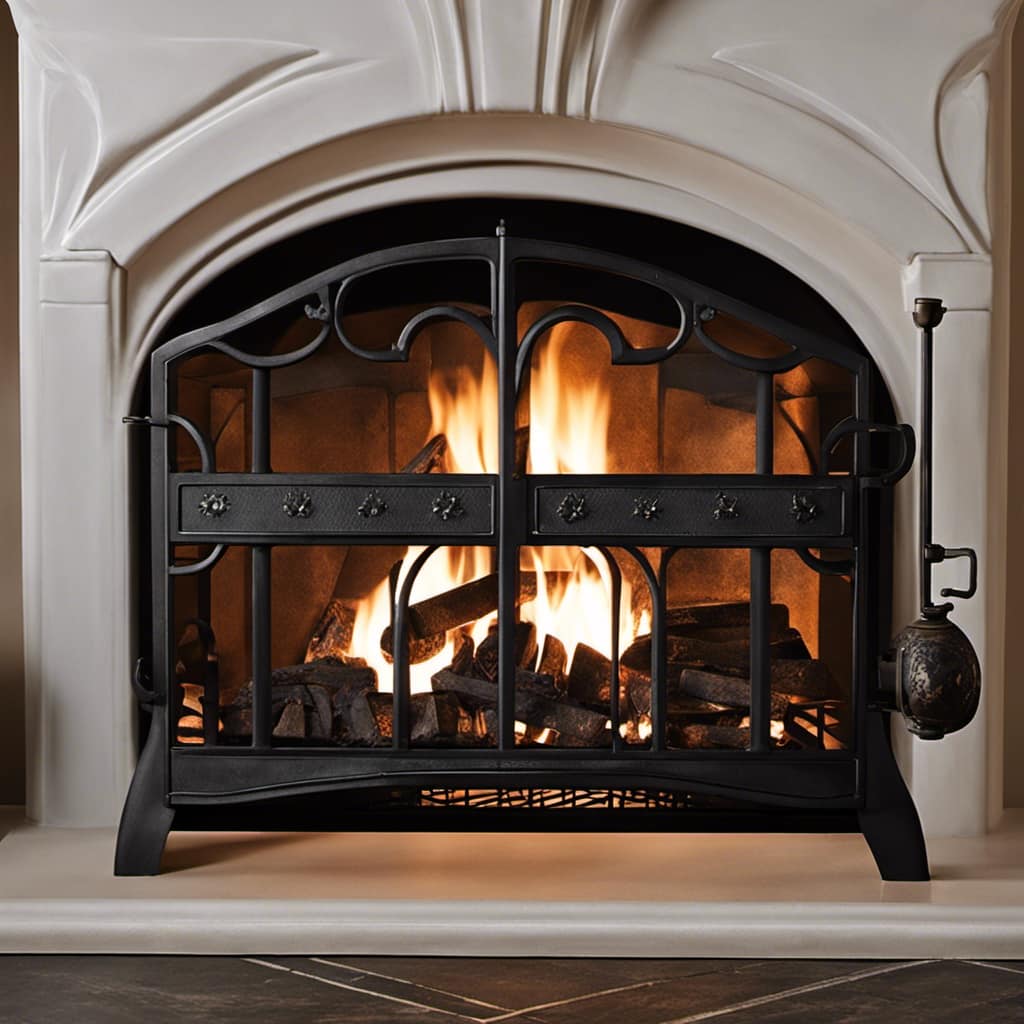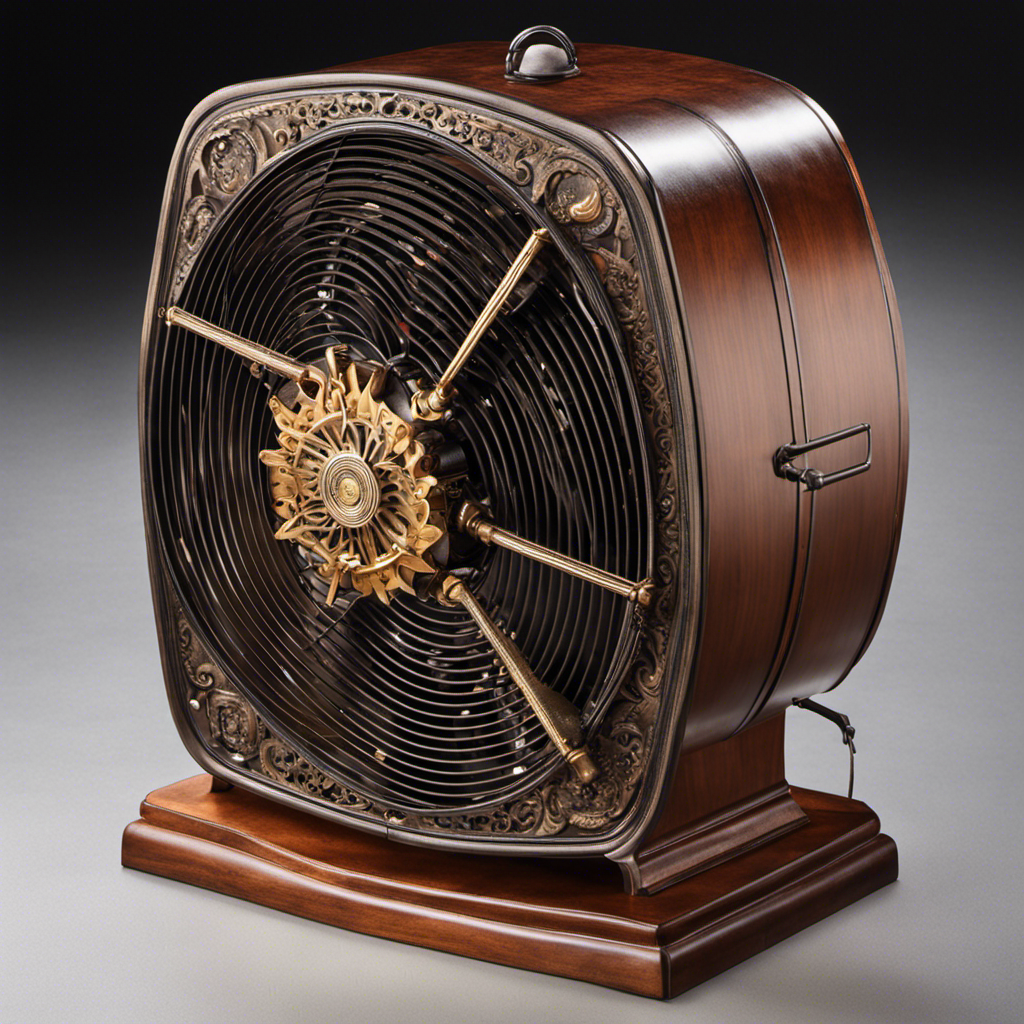
As someone who appreciates the cozy heat of a wood stove on a cold winter evening, I recognize the significance of correctly installing it and ensuring it is properly connected to a chimney.
In this article, I’ll guide you through the steps of choosing the right location, assessing and preparing your chimney, installing the chimney connector pipe, and connecting your wood stove.
By the end, you’ll have a safe and efficient wood stove and chimney setup that will keep you toasty all season long.
Key Takeaways
- Choose a convenient and efficient location for your wood stove, considering ventilation and fire hazards.
- Assess and prepare your chimney for the wood stove, checking for blockages and damage.
- Properly install the chimney connector pipe, ensuring accurate measurements and insulation.
- Connect the wood stove to the chimney securely, inspecting the connection for gaps or loose parts.
Choosing the Right Location for Your Wood Stove
I’ve been contemplating the ideal spot to install my wood stove, taking into consideration factors like convenience and efficiency.

When it comes to wood stove safety, proper ventilation is crucial. The location of the stove plays a significant role in ensuring both.
It’s essential to place the wood stove away from flammable materials, such as curtains or furniture, to prevent any fire hazards. Additionally, the stove should be installed near a proper ventilation system, like a chimney, to allow for the efficient removal of smoke and harmful gases.
A well-ventilated area not only reduces the risk of carbon monoxide poisoning but also ensures that the stove operates at its optimal efficiency.
Assessing and Preparing Your Chimney for the Wood Stove
I need to inspect and clean my chimney before installing the wood stove to ensure proper ventilation and prevent potential hazards. Assessing the chimney condition is crucial to determine if any repairs are needed. The chimney should be free from any blockages, such as bird nests or debris, that can obstruct the flow of smoke. The chimney cleaning process involves removing creosote buildup, a highly flammable substance, to reduce the risk of chimney fires. A professional chimney sweep can perform a thorough cleaning, using specialized tools and techniques. It is recommended to have the chimney inspected annually, especially before using a wood stove. By properly assessing and cleaning the chimney, you can ensure the safe and efficient operation of your wood stove.

| Assessment | Cleaning Process |
|---|---|
| Check for blockages | Remove creosote buildup |
| Inspect chimney structure | Use specialized tools |
| Look for cracks or leaks | Sweep the chimney thoroughly |
| Evaluate overall condition | Ensure proper ventilation |
Installing the Chimney Connector Pipe
Before installing the chimney connector pipe, make sure to measure and cut it accurately to ensure a proper fit.
Positioning the connector pipe is crucial for the efficient functioning of your wood stove. It should be installed at a slight upward angle to allow for a smooth flow of smoke and gases.
Additionally, proper insulation for the connector pipe is essential to prevent heat loss and reduce the risk of fire hazards. Insulating the pipe not only improves the stove’s efficiency but also helps maintain a safe temperature inside the flue.
Once the chimney connector pipe is securely in place, you can proceed to connect the wood stove to the chimney. This step is critical for creating a sealed system that allows the smoke to exit through the chimney while preventing any leaks or backdrafts.

Connecting the Wood Stove to the Chimney
To ensure a secure and efficient connection, I’ll carefully position the wood stove next to the chimney and then start attaching the stovepipe to the flue.
Proper ventilation is crucial when connecting a wood stove to a chimney to prevent the buildup of dangerous gases like carbon monoxide.
Here are four important steps to follow for a safe and effective installation:
-
Measure and cut the stovepipe: Accurate measurements are essential to ensure a proper fit. Use a tape measure to determine the required length of the stovepipe and cut it accordingly.

-
Attach the stovepipe to the stove: Slide one end of the stovepipe onto the stove’s flue collar and secure it using screws or clamps. Make sure it fits tightly to prevent any leaks.
-
Connect the stovepipe to the flue: Position the other end of the stovepipe over the chimney flue opening and secure it using screws or clamps. This connection should be airtight to maintain proper ventilation.
-
Inspect and test the connection: After completing the installation, inspect the entire connection for any gaps or loose parts. Additionally, it’s essential to test the stove and chimney for proper operation and draft before regular use.
Testing and Maintaining Your Wood Stove and Chimney Setup
Regularly inspecting and cleaning the chimney and stovepipe is essential in maintaining a safe and efficient wood stove and chimney setup.

Testing wood stove performance and troubleshooting chimney issues are important steps in ensuring the proper functioning of your wood stove system.
When it comes to testing wood stove performance, it’s crucial to check for any leaks in the system, as even small leaks can lead to inefficiency and potential hazards. Additionally, monitoring the smoke output and flame characteristics can provide valuable insights into the stove’s performance.
Troubleshooting chimney issues involves inspecting for creosote buildup, blockages, and ensuring proper draft. By addressing these issues promptly, you can prevent chimney fires and maintain optimal performance from your wood stove.
Conclusion
In the dance of warmth and smoke, the wood stove and chimney become one. With careful consideration of location, preparation, and installation, their union is forged.

As the chimney connector pipe joins them, a harmonious bond is formed. Through testing and maintenance, their relationship is nurtured, ensuring the safety and efficiency of the wood stove and chimney setup.
Like a well-choreographed performance, this connection brings both practicality and beauty to the hearth.
Growing up surrounded by the vast beauty of nature, Sierra was always drawn to the call of the wild. While others sought the comfort of the familiar, she ventured out, embracing the unpredictable and finding stories in the heartbeat of nature.
At the epicenter of every remarkable venture lies a dynamic team—a fusion of diverse talents, visions, and passions. The essence of Best Small Wood Stoves is crafted and refined by such a trio: Sierra, Logan, and Terra. Their collective expertise has transformed the platform into a leading authority on small wood stoves, radiating warmth and knowledge in equal measure.











